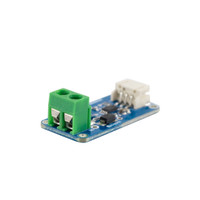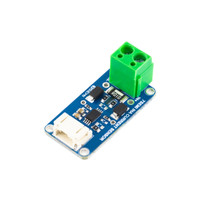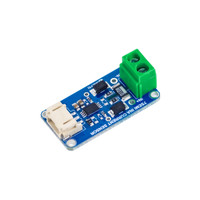Seamless Low-to-High Voltage Communication for Embedded Systems: Enable Robust Signal Translation Across Multiple Voltage Levels
The 7Semi Bidirectional Voltage Level Translator Breakout TXB0104 is a professional-grade solution designed to bridge communication between devices operating at different voltage levels. Engineered with the powerful Texas Instruments TXB0104 chip, this 4-bit noninverting translator allows for smooth bidirectional voltage conversion between logic levels of 1.2V to 3.6V on Port A and 1.65V to 5.5V on Port B, making it ideal for interfacing 3.3V microcontrollers with 5V peripherals or combining 1.8V sensors with 3.3V systems. The board supports automatic direction sensing and includes an output enable (OE) pin to place signal lines in a high-impedance state when idle, optimizing power usage. Perfect for Arduino, Raspberry Pi, and ESP32 projects, this breakout board ensures reliable and interference-free logic level shifting for a wide range of embedded applications.
Key Features
-
Wide Voltage Support: Compatible with logic level translation between 1.2V–3.6V (A Port) and 1.65V–5.5V (B Port), enabling seamless interfacing across various voltage standards.
-
Bidirectional Communication: Supports automatic direction detection for hassle-free two-way data flow between systems.
-
VCC Isolation for Safety: Built-in isolation ensures all outputs are high-impedance when either VCC is grounded, protecting devices during power cycles.
-
Low Power Operation: Consumes only 5 µA max ICC, making it energy-efficient for battery-powered projects.
-
Output Enable Function: OE pin allows for external control to place outputs in a high-impedance state, reducing signal interference.
-
Compact Breakout Design: Dual-row pin headers with clear A-side and B-side signal lines offer easy integration into breadboards and PCBs.
-
Robust Build Quality: Built using premium components from Texas Instruments for consistent and stable performance.
TXB0104 Breakout Overview
- A-side signals are the low voltage signals. VccA must be at a lower voltage than VccB. The voltage range for VccA is 1.2V to 3.6V.
- B-side signals are the high voltage signals. VccB must be at a higher voltage than VccA to avoid total protonic reversal (or at least, to avoid possible damage to the chip). The voltage range for VccB is 1.65 to 5.5V.
Evelta TXB0104 Voltage Level Translator Breakout Dimensions










